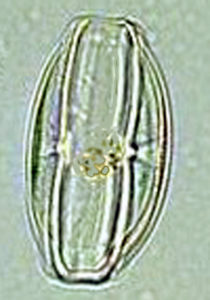
Effect of post-spawning feeding on reproduction in channel catfish
Feeding channel catfish broodstock once a week to satiation limited fish growth but resulted in optimum condition factor during the post-spawning phase.
The authors developed hatchery techniques for producing Florida’s native pink shrimp for the Crystal River Mariculture Center.

Feeding channel catfish broodstock once a week to satiation limited fish growth but resulted in optimum condition factor during the post-spawning phase.

Institutions in China and the U.S. are establishing domesticated lines of Penaeus chinensis, a cold-tolerant species with additional positive production characteristics.

Although research on catfish genetics began in the 1960s, applications of genetic improvement in aquaculture have lagged behind other animal industries.

Catfish producers and processors should actively begin the process of reconsidering production systems to drastically reduce costs and equitably share risks.

Taura Syndrome Virus has negatively affected Guatemala's shrimp-farming industry, reducing overall shrimp survival from 81 percent to 30 percent.

A number of studies have demonstrated the role of a temperature-mediated component in shrimp survival to infection by White Spot Syndrome Virus.

The Yellow Sea Fisheries Research Institute in Qingdao, China, is producing strains of fleshy shrimp with faster growth rates and higher disease resistance.

If selective breeding is done for several traits simultaneously, the selection response for each will be reduced, as compared to single-trait selection.

Genetic improvement will play a key role in the further development of the ongoing domestication of shrimp, important for the industry's long-term acceptance.

A domesticated organism is trained to live with, or be of service to, humans. In practice, their life cycle has been closed in artificial environments.

Can microbial plate counts accurately distinguish fish fillet quality? It's an effective quality indicator for some aquaculture species but not others.

Progressive hatchery operators recognize the benefits of adding benthic pennate diatoms of the genera Amphora and Navicula to their larviculture tanks.

Aquaculture often fails to enhance productivity and competitiveness with genetic improvement, perhaps due to uncertainty over which methods should be used.

Once a pathogen breaches the physical barriers of its host, it encounters the nonspecific immune response components that attack and help destroy the pathogen.

An approach to improve growth performance and phenotypic uniformity is the reduction of genetic variability by production of clonal Nile tilapia lines.